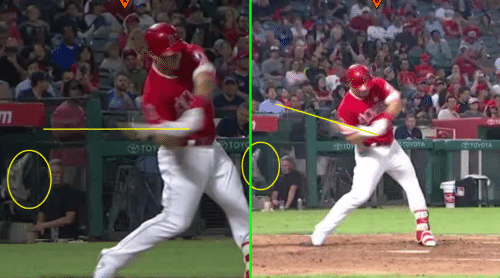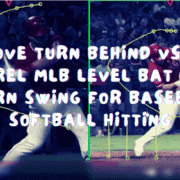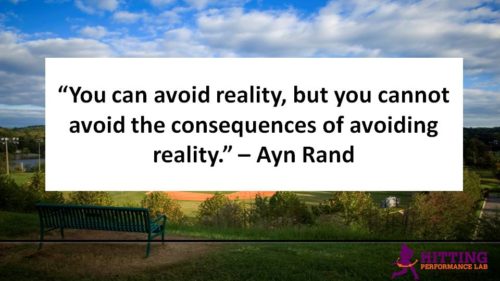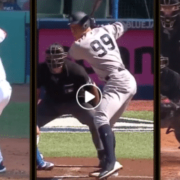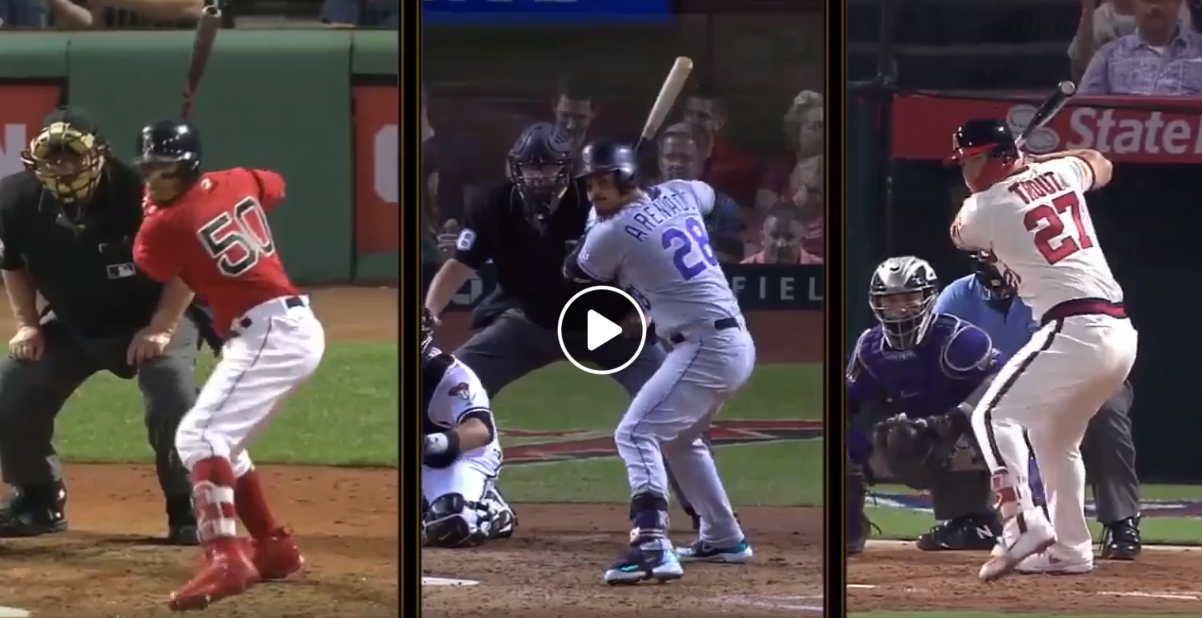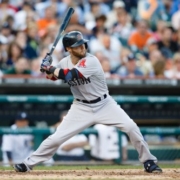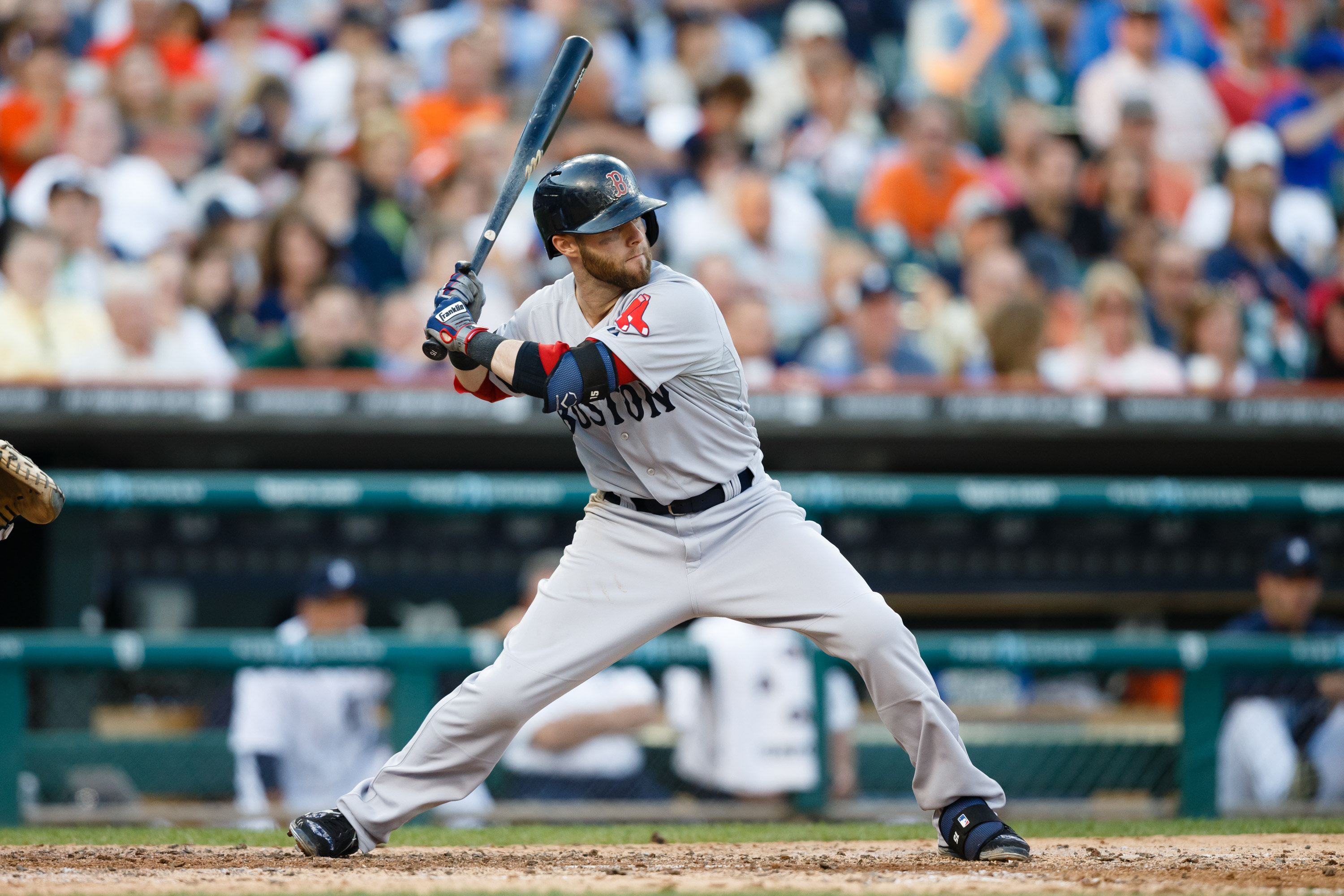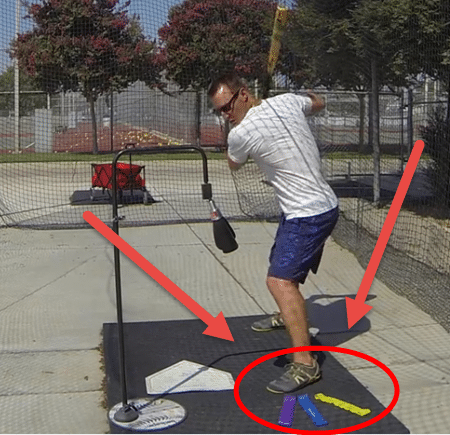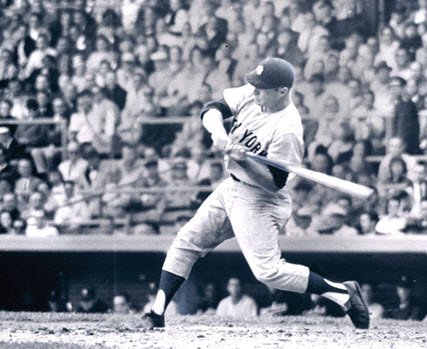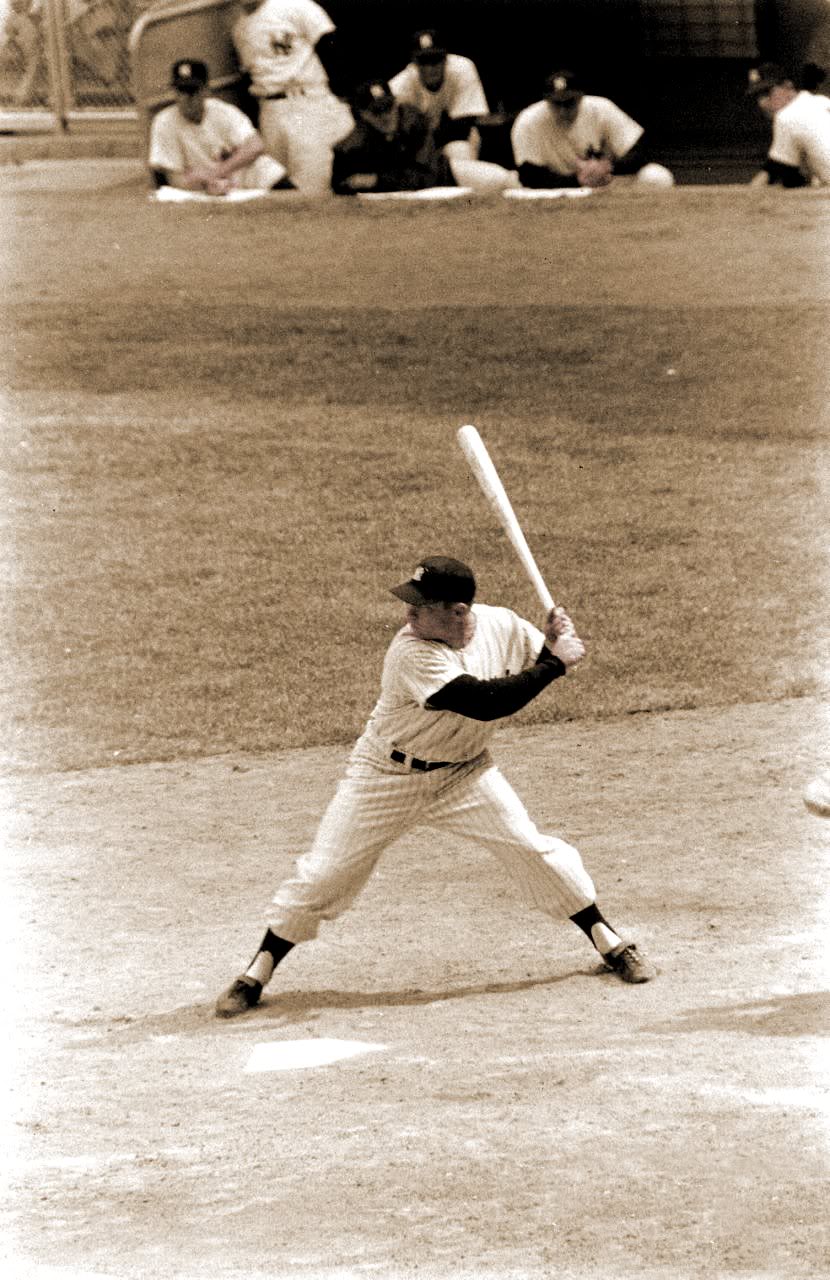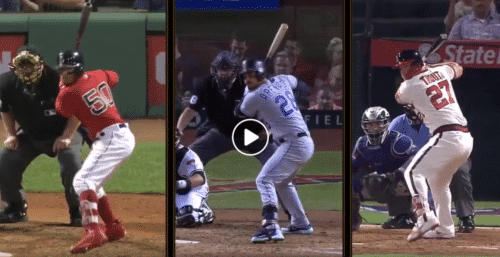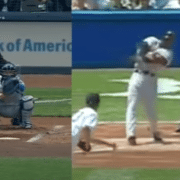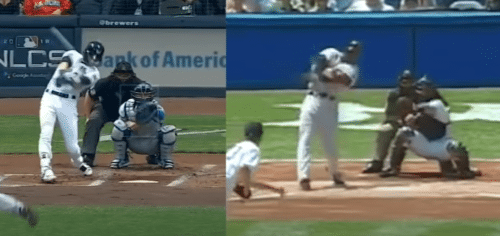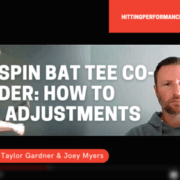Backspin Bat Tee Co-Founder Interview: If One Of The Best, Mike Trout, Is Giving Up An Average 20-mph Of Ball Exit Speed, How Much Do Mere Mortals Give Up Doing The Same Thing?
Here are the Backspin bat tee co-founder interview with Taylor Gardner topics that we discussed:
- What do bat tee adjustments mean to you when it comes to talking to your hitters?

- True or False: Hitters MUST straighten their front leg to be effective…
- What if hitters used a more precision approach like golfers when operating between 90-degrees?
- Instead of writing off the arm bar as it doesn’t work, why not ask how can it work?
- Is there ever a time when ‘swing down’ or ‘barrel above the hands’ bat tee cues can work?
- If one of the best, Mike Trout, is giving up 20-mph of ball exit speed, how much do mere mortals give up doing the same thing?
- Where can people find more about you Backspin bat tee guys?
The following is the bat tee transcription of the video above. This is a sneak peak at the expert interviews we’ll be including in Volume-2 of the Swing Smarter book series. Enjoy!
BREAKING NEWS:
Grab two chapters of our NEW Amazon book FREE...
———-
Joey Myers 00:07
There he is.
Taylor Gardner 00:09
Oh,
Joey Myers 00:10
You hear me? Okay.
Taylor Gardner 00:12
Oh, yeah!
Joey Myers 00:13
Oh, there’s the baby. You got that mixed up? I don’t think that’s supposed to go in your mouth.
Taylor Gardner 00:21
Probably should.
Joey Myers 00:24
Look at you.
Taylor Gardner 00:26
Yeah.
Joey Myers 00:27
Causing your parents so much so many sleepless nights.
Taylor Gardner 00:30
Yeah, momma needed a shower time and dad had an interview here.
Joey Myers 00:38
Double interview.
Taylor Gardner 00:40
Yeah. Oh my
Joey Myers 00:45
Look at that, first time I think we’ve done a zoom interview.
Taylor Gardner 00:49
Oh it has been working out, better adjust my camera?
Joey Myers 00:55
No, I think you’re good. What do you need to adjust?
Taylor Gardner 00:57
All I was going to bring it down a little bit. I think I always fall down.
Joey Myers 01:01
Yeah, I think you’re good. Okay. Are you ready? Let me do the official bat tee start. Hello and welcome to Swing Smarter Monthly Newsletter. This is your host Joey Myers from HittingPerformanceLab.com and probably for the half a dozenth interview. I have Taylor Gardner here from Backspin Bat Tee. Welcome to the show. Taylor looks like you brought a little friend.
Taylor Gardner 01:26
That’s right. Yes. Yeah. She has been influenced by any good or bad and…
Joey Myers 01:37
there. There we go. You froze for a little bit. Say it again? Say No. So, she’s been influenced by what?
Taylor Gardner 01:46
I said. No, we got we got a fresh template here. She hasn’t had any good or bad instruction to start working with this.
Joey Myers 01:54
Yeah, yeah. Tie the right arm behind your back and… is your brother? Is he lefty? Or is he righty?
Taylor Gardner 02:03
He’s a switch hitter. You can do both.
Joey Myers 02:05
He does both. But what about throwing? Is he a righty?
Taylor Gardner 02:07
He’s righty.
Joey Myers 02:09
Okay, cool. Well, hey, I wanted to get you on the on the other side of the screen here and wanted to talk about making bat tee adjustments. So that we could go into the hitting side we could go into the strategy side we can go into any different things. So, what do adjustments mean to you when it comes to talking to your hitters?
What do bat tee adjustments mean to you when it comes to talking to your hitters?
Taylor Gardner 02:30
The adjustment is, must be understood and adjustment is something if a hitter is already attempting to be on time, it’s really hard to make adjustments if you’re not in the time window to start with. If you’re going up there to hit and you’re just purely reacting your adjustments are also reacting maybe even twice as long or twice as late as they should be.
Taylor Gardner 02:56
Within the understanding that people were syncing up release point we have the timing window of the pitch coming in. Maybe we’re sitting on fastball and all sudden we a pitcher throws a changeup, and whether you recognize the spin or the speed or the trajectory angle, whether an off-speed pitch, what do you do?
Taylor Gardner 03:15
Well, if your plan was there to help you your approach is there to help you not hurt you, so within your plan or approach if you’re on time for fastball, and oh no it’s an off-speed pitch. What do you do? Well, easy answer is, you don’t stop your swing. I know we get told a lot of wait, let that curveball get a lot deeper. Now we’re talking about changing depths and it’s really hard to change depths of timing on the fly. So as instead of being reactive to making your adjustment proactive and making your adjustment one thing that my baby down actually brought a bat here to show you…
Joey Myers 03:55
Use the baby as a bat…how cute she is.
Taylor Gardner 04:02
One thing that we see a lot with hitters. He was left-handed here. I do apologize. Is they’re sideways, they’re pretty lined up with a pitcher in some fashion bat tee stance, and then we start to ride and stride as they start to witness that. Okay, this ball isn’t a perfect fastball down the middle. What do I do? Well, we see them not only continue to take their head and posture to the ball, but you see a lot of hitters start turn in and sit with the ball.
Taylor Gardner 04:33
As opposed to going uh oh, I’m a little early, let me pull out and then have to release my arms and hands to hopefully start to see hitters actually sit with that ball. Then because, you sit, any movement takes time. And if the plane is correct, you’re on time for the pitchers fastest pitch and then if you’re making an adjustment is to bite. This is where a lot of young hitters especially they don’t do a good job of buying time.
Taylor Gardner 05:00
They end up staying on their backside and opening up too soon and all they have left is like it with their own risk. And yeah, you can hit a ball and do that, and you probably get on base and feel good about yourself. But the faster you know that speed starts to go up and level and the more drastic change of off speed, you get a 90 mile an hour fastball and 80-mph changeup. That’s a little different than facing a 75 mile an hour fastball and 70 mile change-up.
Taylor Gardner 05:27
As a pitcher supposed to extend those timelines, adjustments and variables, the hitters have to as well. The ability to be ready for the fastest pitch and also be able to buy time while staying in a good posture position on the ball is something that we see really good hitters do and you know, quite frankly, amateur hitters don’t do as well. Oh, sure at some level. Yeah, won’t be a good fastball hitter. Every great hitter is known to be a great fastball hitter.
Taylor Gardner 05:55
If you’re looking off speed looking for that, that slow curveball every fast ball is going to beat you. On the timeline you got to be prepared for the pitches, pitchers fastest pitch as the fastest timeline. Therefore, your plan is there to help. Yeah, he’s going to be perfect every time, well of course not, it’s baseball. It’s tough. But at least the plan was in place to help you be on time for fastball and buy time for off speed.
Taylor Gardner 06:23
For example, this last weekend, my nephew, faced his first knuckleballer. 13 years old didn’t know this pitcher had a knuckleball it wasn’t his main pitch, so you know first at bat I don’t know hit a fastball for double, second a bat gets a strike or two on him a ball or two and then all the sudden, whack! He hits a single, steals second base eventually gets to third base and the coach at third goes, “good job Maverick you know you really sat well in your legs on that change up”, he goes “wasn’t a changeup coach, it was knuckleball”. He goes, “Oh, when did you realize it was a knuckleball?” “After I hit it!”
Taylor Gardner 06:59
It reminded me that he took a good plan to the plate, ready for fastball he happened to adjust instinctively to this crazy knuckleball, but it was more about controlling this contact depth. I’m not quitting on my swing. Did he sit more in his legs, sure. Did he have a locked out-front leg? No. But he found a way to keep his spinal engine and posture on the ball. By the time he pulled the trigger. Sure, the ball got a little deeper, he barreled it up, he got a good hit out of it. At the end of the day, it didn’t fool him, this random pitch that he really has never seen, didn’t make him react and freeze.
Taylor Gardner 07:36
It didn’t make him react it to slow down and touch it, his reaction was to stay on the ball and give it a chance. And it sounds easy to do until you start seeing a pitch come flying at your body. For us older coaches that aren’t playing anymore, I think sometimes we forget that. There’s a little fear involved. And so, a good plan leads to good adjustments. And sometimes knowing how to get over that fear or filter out your situation really helps that plan starts to stick together better.
Taylor Gardner 07:57
And therefore, those bat tee adjustments really become valuable. As far as other types of adjustments. And that was one type of sitting in your legs, other types of adjustments. We’ve seen Mike Trout sit in his legs; we’ve also seen him bend over a little more at his waist a little side tilt. That’s another way of buying time. Adjustments to me, in our world is a place to buy time, every movement takes time. But unless you’re ready to line your posture up for the ball on time to begin with, adjustments are just going to slow you down. You’ve got to make sure those adjustments are there to help you not hurt you.
Joey Myers 08:48
Well, you said a couple bat tee things that would blow a couple people’s minds they were listening to this… number one is sitting on your backside and swinging from that position number one, and number two, that you don’t have to straighten out your front leg that you can keep that bent. And I love that and that’s something that I’ve learned from you and your brother and Matty, Matty Nokes that the legs really set direction like the lower half basically sets directional force, it does contribute to some of the power.
Joey Myers 09:16
And we’ve learned discussions on that over the last couple of years saying you know, probably between 20 and 30%, it probably contributes to the power of the overall power thing. But the idea that you can use your knees bending your knees at front knee to adjust to pitch height like those are bat tee adjustments that we can make that if you’re from a train of thought that says you have to straighten it you have to brace that leg out, right, I mean that’s really not… We’re trying to like you said buy time.
True or False: Hitters MUST straighten their front leg to be effective
Taylor Gardner 09:46
Right. Speaking while the bracing the front leg, the front leg can obviously we can see it YouTube it, Google it. Now of course you can hit with a straight front leg and even sitting in your legs may still turn out to be a brace straightening front leg, you still bend your knee and still walk and brace into that front knee.
Taylor Gardner 10:06
But I think a lot of times as coaches and instructors that usually come to… an issue that I’ve seen come around is their teaching to push the leg straight, as opposed to letting the hip pull the leg straight. Pitchers do a really good job of this, they don’t just land in their front leg and then push straight up. Is their vertical ground force? Of course, there is.
Taylor Gardner 10:29
Now in hitting though, there may be little more of that vertical into horizontal ground force, it sounds funny to say, but you’re not just going to push up away from the ball every time. Sure, could you get away with it, of course, and there’s nothing wrong if you are on time and you get the barrel to it, great job. But like you like to say Joey, if it happens too much to ignore, I’ll just start paying attention.
Joey Myers 10:52
Yeah, and on that note, that was the one big bat tee thing that I pulled from you, we’ve been friends for probably over 6, 7, 8 years now, was that idea of staying sideways and keeping that back foot from completely turning over. Like a lot of coaches will say pivot that back foot, pivot that back foot, and meaning, that back heel will turn towards home plate. And it’ll continue to keep rotating. And so, I think we’ve developed almost a generation or two of hitters that are over rotating the lower half.
Joey Myers 11:23
And you say, using Matt Nokes’s lingo is stay sideways, stay sideways, I think is a great one. And to your point, or to our point that it happens too much to ignore, and you can’t just write it off. Some of our buddies in the past have said well, that hitter can do that because he XYZ that hitter can do that because it’s… no it happens if you take the top 100 hitters, 50 hitters, you’ll see half of them stay sideways and maybe the other half, get to this neutral with it. So that happens a little bit too often to be ignored.
Taylor Gardner 11:57
For anyone that’s listening, if you’ve ever played golf and if you haven’t fine taken a baseball bat take it slow, practice golf swing, go YouTube, Rory McElroy, Tiger Woods, anyone you want. Golfers have figured out how to stay sideways with their back foot. Now, their balls on the ground and it’s generally between them. Like ball being on a bat tee for hitters. They’re more allowed to buy but positions of contact with golf. However, you’re going to see baseball players do it too. But since the contact point in baseball can be further out front. Sure, you’re going to see that that back foot rotates a little more before contact. I get that told a lot. “Well, look at this hitter.”
Taylor Gardner 12:33
Yes, but look what happened the first 80% of his swing before contact, he was still sideways, he was still… now was he turning his shoulders, was he loading his core, the spiral engine. Sure, but the back foot was still sideways to hit, the back foot ends up becoming a bit of a rudder. I won’t even take that too literal. But you wouldn’t start with your back foot facing the catcher, you wouldn’t face with your back foot facing the pitcher. There’s a reason, it’s a natural position for the body.
Taylor Gardner 13:05
The ball is thrown in front of us and quite honestly, ball comes in and it is in front and to the side of us. If you’ve ever swung an axe, it makes sense to shift your weight and leverage up. That’s why we want to have a little more shift, not only for taking your head to the ball and be able to judge depth before moving very good and feeling your depth and putting a nice sense to it.
Taylor Gardner 13:34
But at the same time spinning against my back foot. Step on my dog… [laughs] spinning too soon. Now the ball is essentially to the side and behind us. Not that you can’t hit from here we opened up too soon. My swing’s wanting to go this way, I crossed my face this way, we want to cross our face into contact with the ball. Again, golfers understand this and their balls in front of them. They want to cross the face you don’t want to spin out and then cross their face too late that ends up turning into a slice and anyone who has played golf, probably vouch for that, my goodness I’m spinning off the ball. balls on never fixed.
Joey Myers 14:19
Well, and what I love the golf analogy is because in golf, you have a ridiculously small margin for error, you have we’re talking in hundreds of yards, not hundreds of feet and your little ball that’s got to get hit by this clubface and then the square center center contact with the clubface in the ball the straighter the ball is going to go. You can take that clubface and slightly like a couple of millimeters you can slightly pull it in like you’re going to hook it or slightly away like you’re going to slice it and those little, teeny millimeters by the end of that 200-yard journey is going to be way pull or slice.
Joey Myers 14:55
What I always tell my hitters, I say when we’re teaching this concept of staying sideways and keeping that back foot from over rotating is, we have to play almost like a golfer, where a golfer’s looking at one shot to the pin, I call it one degree of fair territory. And outside of that 359 degrees of foul territory, because in golf, the objective is the least number of strokes to get it in the hole. In baseball, of course, we have 90 degrees to play with, but we want to act like we’re doing like golf, we want to act like there is a smaller margin, and we have to operate within that smaller bat tee margin, right?
BREAKING NEWS:
Grab two chapters of our NEW Amazon book FREE...
What if hitters used a more precision bat tee approach like golfers when operating between 90-degrees?
Taylor Gardner 15:29
Along those lines, that it’s incredible you say that because the whole outside pitches, let it get deep, inside pitchers you’re magically allowed to pull for some reason, we’re talking about different depths there. Where in golf, obviously, the ball’s not moving, but to their benefit, they’re more precise, they have time to get their stance set up, time to adjust their face angle. So yes, maybe we don’t have that luxury in baseball, but we do have the luxury of knowing our contact depth.
Taylor Gardner 15:58
Do I like hitting the ball more? You know, some hitters like hitting the ball more off their front hip, some even further out front, some like hitting it a little deeper, more or middle of the other ball, whatever it is that you are super comfortable. That’s your decision. That’s what you’re going to battle with the best. And, again, based on your timeline. I have a lot of young hitters, and we constantly have to work on reminding them. Where is your preferred contact?
Taylor Gardner 16:29
And not to make them look like robots, but you’ll see them when uh, I don’t know, maybe like right there or up here. It’s like, Oh, you got to know, if you don’t know, you’re guessing, like your close, good job of being on time. We want to be on time with our contact point. This is a lot more precise. And as you know, aim small miss small, it’s may not always show up in baseball, maybe you had a day where you didn’t hit well. But you know what my plan was good. My adjustments were sound. And maybe I was just a little early or tad late, whatever that may be over under the ball.
Taylor Gardner 17:06
But you can sleep well at night knowing, man I had it at 99% today. And you don’t realize how much you haven’t figured out. You start thinking about more precision, besides movements. And then suddenly you go out three years ago, I was going to battle with a 50%. efficiency. That shocks a lot of hitters and I really do think a lot of good college players get to pro ball and maybe it doesn’t pan out for whatever reason.
Taylor Gardner 17:32
I think a lot of them whether they can say it or not verbiage that happens to a lot of if they get exposed, we get told at every level of baseball, you better swing faster Jerry, you better figure out how to get that faster pitching, you better, have quicker hands, whatever. Of course, we must make those adjustments because we’re being exposed. What if we got ahead of that being exposed?
Taylor Gardner 17:56
I don’t know if you saw the video that I posted on the baseball Illuminati page. I was actually crow hopping of doing run and guns, a nine-year-old ballplayer shuffle stepping out 25 feet in front of them throwing the ball 60-mph our reaction time stupid fast. So never seen anything that fast in their lives. As far as timing wise. And you know what he did? It took him a bit. He filtered it out. He figured out when to go when to shift, how to track the ball.
Taylor Gardner 18:26
And yeah, that ball was getting to him quicker than any pitch he’s ever going to see in baseball. And he started barreling balls up. Our brain’s a supercomputer y’all know that problem is if that supercomputer is putting in the wrong formula, it’s still going to, there’s still going to be a glitch. You still have to help it out.
Joey Myers 18:44
Shoot, I’d even go another step with the wrong formula and just saying that it’s becoming impossible, or you hear that from coaches? Well, that’s impossible, that’s not going to happen, or that’s not reality, or it’s not going to happen. And instead of saying that something’s not possible, why not ask why? or How can it be possible, right? We’ve talked about the front arm shape and trying to get that thing extended out. Whereas everybody in their mother seems to teach this bent front arm, right.
Joey Myers 19:13
The question that I always get when I put that post out there, people will go well, you know, I’ve tried to test it out and beer league softball and works there, but it doesn’t work in the big leagues and whatnot. And if you go way back, Joe DiMaggio and Hank Aaron, Ted Williams, Babe Ruth, all those guys locked out. So instead of saying, oh, that doesn’t work, today’s pitchers throw too hard and blah, blah, blah, blah, blah. Why not ask how can we make that work? Yes. How does that work? Right?
Instead of writing off the arm bar as it doesn’t work, why not ask how can it work?
Taylor Gardner 19:42
What if we made 90 miles an hour feel slower? Nothing’s any easier to hit. But what if? What if it wasn’t impossible. And clearly, it’s not, people do it every day. It’s not impossible. I’d like to say maybe the way we’re rationalizing it and maybe even practicing. Maybe we’re not doing our own job as a baseball coach, making, maybe it’s 75 miles. Now, if you’re struggling, maybe that’s what it is, whatever it is get ahead of that curve, not that you’re going to just start jacking home runs. But don’t be late. There’s no excuse for being late. There’s no excuse for not filtering out and understanding your environment.
Taylor Gardner 20:19
Maybe you don’t get to face a live picture every day or practice, that’s fair. I’m sure you have your work cut out for ya. But there’s no reason to get your doors blown off, when you have all of the potential to be as early as you want. Once you’re late, once the ball gets behind your timeline, and it gets behind your back. Pitcher starts in front of us. We as hitters, let ourselves be late. Maybe because we’re trying to do some crazy swing, like, oh, let it get deep and snap it or something, I don’t know.
Taylor Gardner 20:50
But whatever it may be, again, kind of back to the approach and those adjustments. Got to clean that up. And maybe you got to study more time. Maybe you got to study more spinal engine springy fascia and figure out where to get your running position. To your arm bar point… I think a lot of… uh oh, we have a wandering baby…
Joey Myers 21:13
Wait till she starts walking…
Taylor Gardner 21:15
I know I can’t wait! I understand folding your levers and engaging muscles, getting correct shapes. That makes sense. But when you see arm bar, and it starts to walk out, or to do slow motion. Yeah, looks funky in slow motion to arm bar. When you engage the body and it starts out, it starts to feel a little more natural golfers do the same thing. Luckily for us that in golf, you get to start with it extended and just connected to your body from there.
Taylor Gardner 21:55
But this bat is heavy, I completely understand why people want to hold it close to their body, it is rational. And it’s still close to the body. It’s not like we’re arm barring out here. If you’re still arm barring across our core, this bat is behind you, want lag and you want leverage, leverage, and just loose and lever sometimes, your hands are so close to your body. And even so close this way to the middle of your body. By the time you do a swing, yeah, you’re getting the barrel off your foot. And it may be a strong position depending upon position.
Taylor Gardner 22:34
But if I never got the benefit of the lag, and a clearing, and time to speed up the bat, it takes time to speed up the bat. This is not an instantaneous thing. I know this swing only takes like point two seconds; I get it. That’s slow through the world of everything happening, there is plenty of time and so that hand, grips on the bat. For most people they’re bottom hand is the weaker hand. Not doing anything left-handed if I have to. But you want your dominant arm to do his job.
Taylor Gardner 23:09
Not that you have to do it all with a dominant arm. But you certainly don’t want your weaker arm to be your dominant arm. Now, how do you get them in position? Well, as you get a swing, if it happens to lock out, you’re getting the benefit of lag and leverage. How is that wrong? If I understand timing, if I understand off your positions and swing plane. And armbar is nothing in the scheme of arguments. I’m linked into the lever. If I do it correctly, then of course, I have more leverage and more bat speed.
Taylor Gardner 23:42
But bat speed takes time. And so, when I see a lot of kids, they start here and the lever pull even more on their hands get across the face really soon, elbows way behind their hand and not even close to be slotted. And next thing you know, you’re chopping down or they slice it, and more important, their swing radius and swing arc may only go so far. Versus if I clear, I can get a further reach. And it’d be right within my wheelhouse of comfortability.
Joey Myers 24:13
If we go back to your contact points, right, knowing what your contact points are. When we work with our hitters on what we call our horizontal approach, or our line-to-line approach. Being able to hit the ball the other way, pull it, and go up the middle things like that. We talked about that there are two main things to be aware of… one is what you’ve already said is your contact point. But number two is when that barrel enters the hitting zone.
Joey Myers 24:38
And it’s going to be different for we call middle in and middle away. It’s going to be different. So middle away and middle down. That snapping early getting the barrel in the zone early makes sense. It’s a great middle down of the strike zone middle away approach. But when it comes to middle in the middle up, it doesn’t make sense, and I use those bad cues that I thought were bad about four years ago. Swing down, barrel above the ball, we do use those but only for middle in, middle up.
Is there ever a time when ‘swing down’ or ‘barrel above the hands’ cues can work?
Taylor Gardner 25:05
But right. Speaking along those lines… Yes, have you ever had a kid trying out a new baseball bat and Oh man, he’s struggling with the weight or it was too long for him. But that’s some of the stuff you’ve been told, just remember that when this bat is laying horizontal, is heavier, as far as where the balance is. There’s a reason we stack the barrel. And there’s a reason we hold this bat up, you can hold it with one finger.
Taylor Gardner 25:34
That’s how life, if you will, work how to control the bat, Matt Nokes talks about this, why, the barrel above the hands, it’s taken me a while, the feel can be down, in fact there is a down move in the swing, hold your posture. It’s called your head. The balls is below you. Yes, we want to swing on plane. Of course. But how you get to that barrel entering the zone. And before it starts that actual upswing? That is paramount.
Taylor Gardner 26:07
That also was still wrong with the down early method. Yeah, you’ve got there. But did you give up timing, to get to position at contact. Did you give up adjustments, because your only move is to get there. If you were able to just keep your hands and be ready for that high and inside pitch, as Perry husband would say we get to focus on EV tunnels.
Taylor Gardner 26:34
If I’m ready for that, then great. And then I can always adjust if I need to. Wait adjustment patterns, that kind of dynamic plan. Not everyone would agree with me on this, but just from a third party perspective, if the high and inside pitch is the ball that we have to get the barrel out there quickest to, it makes sense to me to be on time with that and adjust down and away with that, because you have more time or space, ball is further away from me to do so, obviously, you get in the baseball stuffs like, well, if you’re looking middle middle, and then that gets tougher if you’re looking away if you’re looking wherever.
Taylor Gardner 27:19
I don’t want to get into the approach part of it. But it just makes sense to me that you can practice, play around practicing with looking high and in, get that pitch locked in, and then we’ll work it down to middle middle, get that adjustment pattern locked in. Maybe for some people, it’s not so much that they have to change their approach, maybe they just need to be comfortable getting to all these pitches vertically, you might not have to worry about what my timing is good, I’m swinging at the right pitches, just getting jammed a lot on high.
Taylor Gardner 27:51
Well, maybe it’s just because you’re dumping your barrel too soon. It’s okay, you got to find where that issue is, and not fight it. But again, let your plan help you get there. The barrel above the hands is a great plan. It helps me already be ready for that movement pattern… sure, maybe you get to that pitch well maybe you’re facing speeds you can handle and you’re struggling with low and away. So maybe you do have to think about releasing that barrel sooner. Okay, nothing wrong with that.
Taylor Gardner 28:23
I would give everyone hesitation to just go out and put out a YouTube video saying this is the one and only way, of course it’s not. But we must understand all of it so that when you hear someone say something, to filter through what they’re saying, you’ll see why he’s doing it, that makes sense. When you come out and some of these instructors say just one swing plane for every pitch. And if I just wait longer than I can see it longer. We know that’s not exactly be true. Eyes don’t see the ball much longer just because we’re not swinging.
If one of the best, Mike Trout, is giving up 20-mph of ball exit speed, how much do mere mortals give up doing the same thing?
Joey Myers 28:56
Well and what’s also interesting is what the actual hitting operating system is when you can watch somebody, when you have been around the block and you’ve seen a lot of these different teachings, you can see what their main operating system is. And I know you and I were similar in this and we want to maintain high ball exit speeds.
Joey Myers 29:16
When you get a hitting guy that’s talking about a certain thing like hey, we need to get that at high and inside pitch with the bend in the front arm we need to get there, well we know that Perry Husband said Mike Trout, one of the best in the world will go down is one of the best top five probably, ever top five top 10 and down and away average ball exit speed is 101 miles an hour, not his top out but his average. And that’s where he’s locked out with that elbow at contact.
Joey Myers 29:45
And then at up and in, he’s reduced to a high school baseball player at 80 to 83 miles an hour. So he’s losing almost around 20 miles an hour ball exit speed that’s 80 feet. That’s 80 feet of batted ball distance that he’s giving up by looking away and adjusting in. Well, some people go well, that’s fine. But here’s the deal. And this is what I tell my players I say, Mike Trout is a once in a lifetime player. He’s just one of those people that we will look back on when he’s done with his career. And we will say he’s one of the best. One of the best ever is giving up 20 miles an hour ball exit speed.
Joey Myers 29:50
20 miles an hour.
Joey Myers 30:24
You know what the amateurs are probably giving up. 30-35 miles an hour ball exit speed? He’s one of the best he can get away with it. You’re going to be given up a lot more.
Taylor Gardner 30:34
Yeah. I can’t remember if it was you or someone else had brought to my attention. It was before COVID happened. I think it was the baseball season before. And they asked, who hit their highest exit speed most often? Try and word that correctly. And I was like, Oh, I don’t know. And there’s Jose Altuve. And Aaron Judge. I was like, oh, okay, wow, two different types of hitter’s sizes body length. They said, Oh, you know how often they hit their hardest exit speeds?
Taylor Gardner 31:06
And at first, I’m like, Oh, these big leaguers? Oh, man, I bet 20% of their hits or they’re popping out near their top exit speeds. It was less than 2%. Wow, less than 2% of all of their hits, on miss hits in the realm of hitting is as hard as you can. What does that mean, though? Does that mean maybe they’re slowing their swing down and touching the ball? No, I don’t think so. And in my opinion, obviously get fooled on some pitches. Okay, fine.
Taylor Gardner 31:33
But I think most of their base hits that they reported, I think their miss hits are that powerful. And once you start to realize that homeruns are the best result, okay, but maybe your best result is a hard line shot, single or double, whatever. However hard you get whatever type of hit is your hardest hit, which for most people is a low launch angle, I dunno, maybe 0-5, maybe 10 degrees. And then that makes sense. Balls coming down about 5, 7, 8 degrees.
Taylor Gardner 32:03
And you can imagine that plane, you’re going to give up exit speed when you raise or lower your launch angle. And I see a lot of people don’t understand that. Oh, no. My hardest hits home runs. Not exactly. I want to say the highest ball ever recorded was a ground ball. Double play. It’s okay. It’s okay that if your exit speed fluctuates, based on how well you struck that ball for a single, double, triple based on how high or low you hit it, that’s fine. And you want to start tightening those windows up.
Taylor Gardner 32:33
But Backspin tee, you know Taylor, Joey, you can’t control your launch angles, not saying you can control your launch angles. It’s just like I’m not saying you can even hit why I’m saying though, is you can work on the precision of contact and work on your precision posture and swing plane. And when it lines up, you smoke a ball at the pitcher’s head, you did your job. And when the next at-bat, it probably feels the same and you hit a homerun, guess what you did your job. You hit the ball far. But more importantly, your plan gave you the ability to fall as hard as potentially could that swing.
Taylor Gardner 33:08
And that’s Oh man, how many young kids have you seen? You throw them one change-up… They’re crushing balls… you throw them one change up. And then the next 10 swings are crap. They just can’t find it… it just ruins their world. It’s like, oh, man, you got to filter that out. Trust the plan and get to the next pitch. It’s okay.
Joey Myers 33:29
Yeah, exactly. That’s crazy. Yeah, that’s a good one to end on. And that’s another call for another day. I want to be respectful of your time because you’ve got a little one that’s down there. And she’s been great. By the way.
Taylor Gardner 33:40
She’s sleeping now.
Joey Myers 33:41
She’s asleep. Yeah, she’s asleep. I’m talking too loudly. I’m talking to you loudly. But hey, I want to let you get back to the baby and get back to the family. hopefully get some sleep. Maybe she’ll take take a nap with her. But hey, where can people find you? socials, website, any kind of deals that you got going on right now? Go ahead. And…
Where can people find more about you guys?
Taylor Gardner 34:04
Yes, so find us on Google backspin bat tee to find backspintee.com, Facebook, Instagram, Twitter, we have a 20% off code at the moment. If you use the code BATBROS. For those of you that follow the baseball bat pros, I’m very good friends with them. They are great people Bill Taylor and them and they’re amazing people. But you’re also going to find our bat tee in Dick’s Sporting Goods here soon. So be on the lookout.
Taylor Gardner 34:28
Hopefully, Academy is a follow that as well for those that maybe that’s closer to here. And we’re trying hard to get Mark word shields and some other big retail stores. But the Dick’s Sporting Goods we’re shipping that out here in a couple days. Extremely excited to make that next jump to the big retail because we’ve done so well on the individual bat tee sale and it’s time to make that move.
Joey Myers 34:50
Yeah, congratulations, buddy. I’ve been with you for a lot of this bat tee journey. I think we jumped on probably we start building our relationship maybe your second year I think you guys are. So, so I’m just excited for you guys. And I know you guys have been just like all of us been through our ups and downs and stuff and it sounds like you guys are starting to starting to rise again. So yeah,
Taylor Gardner 35:12
Yeah, it all started with Joey Myers experiment video, my bat tee versus the other tee, and we didn’t know each other so you have to watch that video.
Joey Myers 35:20
Again. See how they turned out? Yeah, it was in a very bias thing, I was probably, we had run into each other a couple times. We talked on the phone maybe once or twice and I was like, you know what, let’s try this out. Let’s do a bat tee experiment on it. I think it turned out well for you guys.
Taylor Gardner 35:34
Yeah, I think well back to the precision of contact, just changing that visual. You had a more funnel effect with the Backspin Bat Tee, and with the traditional tee, it was a little more scattered and it just makes you wonder, not promoting my bat tee over another tee… Tee just are you working on your precision and in your vision obviously has a lot to do with that so, pick up a Backspin Bat Tee, give it a shot, if you don’t like don’t like it, then I’ll give you your money back. Yeah, definitely.
Joey Myers 36:01
Right. Then percent off and you get 20% BATBROS. B-A-T-B-R-O-S, and that’s all caps, correct? Cool. All right, brother. Well, thanks. Keep up the good bat tee work. Congrats on everything and congrats on the little girl. My first time seeing her.
Taylor Gardner 36:13
Thank you bud.
Joey Myers 36:14
Alright brother. Take care of yourself.
Taylor Gardner 36:16
Have a good one.
Joey Myers 36:17
Have a good Easter.
Taylor Gardner 36:18
Thank you.
BREAKING NEWS:
Grab two chapters of our NEW Amazon book FREE...
